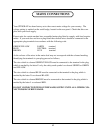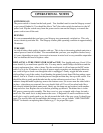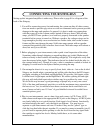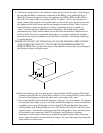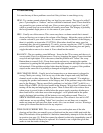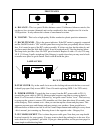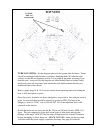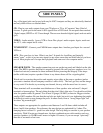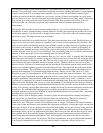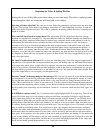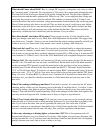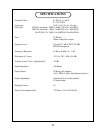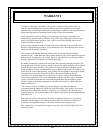
What should I know about BIAS? Bias is a simple DC (negative) voltage that sets, what is called,
the "operating point" of the tube. For our purposes it "fine tunes" the current going through the tube.
We want each of the 4 tubes per channel to be equally sharing the load. This gives the amplifier's
lowest distortion and the tube's optimum life. When we set "bias" we are adjusting that voltage and
measuring the current at a pin called the cathode. The cathode is connected with a 10 ohm 3 watt
resistor that allows the more convenient voltage measurements from terminals right on the top panel.
These 10 ohm resistors also have a second job. They are fuses in case of a really nasty tube failure.
Sometimes a tube will die in a way that burns up this resistor (with a little puff of smoke) and then
with a new tube you will only measure zero at the terminal for that tube. The resistor should be
replaced by a technician, but it should only take ten minutes. Can you solder?
How often should I check these BIAS points? Some people never do. It really should be done
when you change a tube and it is very likely that a little adjustment will be needed. We suggest that
you check every 3 months - that way you are assured that the amp is running optimally and will spot
a tube on its way out. Some check every month, once a week is getting a little obsessive.
What tools do I need? Just two. A small flat screwdriver (insulated handle) to adjust the trimmers.
You also need a voltmeter or multi-meter. You don't need a good one. Analog or digital (preferred)
will do and you can get one that is perfectly adequate for about $25 to $50 as long as it measures DC
volts between 0.1 (100mV) and 1 volt. In the USA, RadioShack sells acceptable inexpensive meters.
What do I do? The amp should be well warmed up (30 min.) and no music playing. Set the meter to
read DC volts. The meter has two test leads, red and black. Put the black lead in the black terminal
on the top marked TPG (ground) or touch the metal point to the steel chassis (but not a painted or
anodized part). Put the red lead in the first red terminal marked TP1. The meter should read either
.25 V or 250 mV(same thing). If it doesn't you need to adjust BIAS 1 trimmer until it does. It doesn't
need to be exact - .23 to .27 will do. Now move the red lead to the red test point labelled TP2. Same
thing, if it is not .25 adjust BIAS 2 so that its close. Continue till all 8 points have been done. If you
trimmed a few, you should re-check because there is a little interaction and you may want to fine
tune a bit.
What if the reading is drifting up and down? Some drift is normal. It is caused by the AC mains
changing and by a little very low frequency noise in the tube. If one drifts above .3 or below .2 then
you may be seeing a tube begin to go bad. Watch it for a while or check it every few weeks noting
changes. This tube should be replaced probably. With mains changes all the tubes drift together and
you may see more long term drift. Another cause is that you forgot to stop the music.
What if I can't trim a tube into range? If all you get is zero or near zero on one terminal it means
either the tube or 10 ohm resistor is dead and needs replacing. If it is too high then it probably is the
tube. If you look at the tubes, that one will probably be cherry red. Get a new tube. If all the
terminals read zero on one channel, then the B+ fuse is likely blown on that side. If all the terminals
read zero on both channels but the amp still plays, then you have a problem with the meter.
Is there any advantages to biasing higher or lower than .250? This is the optimum trade-off
between tube life and cross-over distortion. If you bias a little higher you may lower distortion a bit
but shorten tube life a lot. If you bias lower the distortion climbs fast and the tube life will lengthen -
partially because you won't want to listen as often or as long.
15



